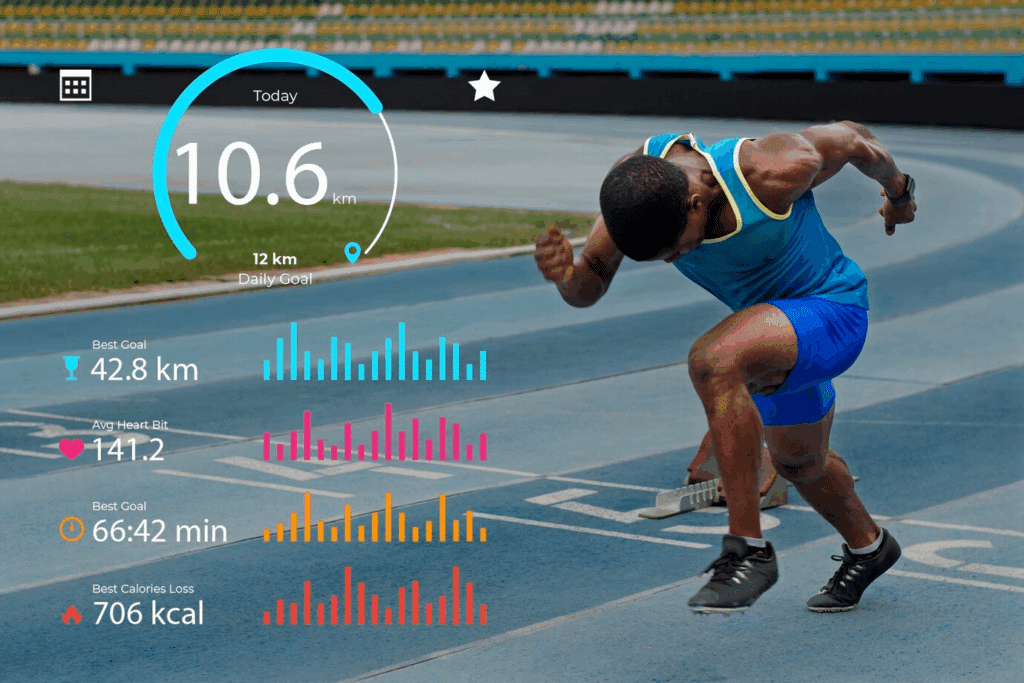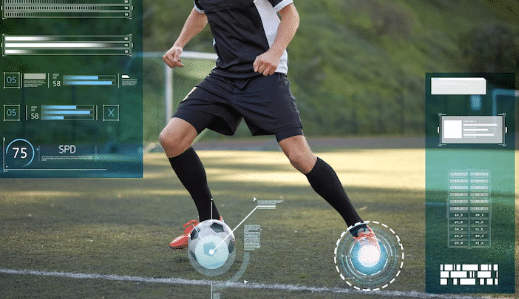Throughout games, athletes can make on-the-spot adjustments based on their current bodily actions and their opponent’s movements. Athletes in the present era can owe their progress to real-time feedback technology. The system presents immediate performance data, allowing users to modify their strategy directly during training.
The technological solutions influence training practices beyond elite categories because they transform all levels of athletic training. Sports enter a new era because instant information transfer has become a primary force in athletic development.
Enhanced Training with Instant Feedback
Making instant approach adjustments based on real-time performance results significantly changes the competition. Athletes achieve better results by receiving performance feedback in the present moment, as it helps them spot and solve their mistakes instantly, rather than waiting until after completion.
The immediate feedback speeds up the learning process and reduces the likelihood of repeating incorrect behaviors. Fans gain new insights into performance through real-time statistics from مل بت and field data, which helps them modify their understanding and improve their performance. This data enables coaches to create on-field recommendations for athletes, which allows them to achieve better benefits from their training sessions.
Athletes now have fewer injuries because they gain in-depth knowledge about their physical movements through this technology. Athletes can receive instantaneous alerts about joint strain or muscle fatigue, enabling them to understand their recovery periods better.
The athletes understand the warning signs before their aches manifest, so they can alter their approach while continuing to perform. With immediate feedback, athletic careers can develop into more sustainable ones, along with safer and more innovative training methods.
Technological Tools Behind Real-Time Feedback
Real-time feedback training relies on advanced devices connected to powerful software that tracks and evaluates performance in real-time. The tools enable sportspeople to make real-time adjustments during training, optimizing their every move. Real-time feedback technologies make use of key monitoring systems, which include:
- Dual-function sensors on wearable devices track heart rate measurements and analyze body movement.
- Through video monitoring technology, coaches and analysts gain detailed insights into player movements, leading to more accurate performance evaluations.
- The high-speed cameras, paired with sensors from motion capture technology, allow users to receive precise feedback on posture, speed data, and technique measurements.
- Sensors situated within footwear track pressure areas and movement sequences throughout, enabling runners and football athletes to adjust their gait precision.
Combining these technologies forms an accurate training system that provides athletes with a better understanding of their physical dynamics.
How Real-Time Feedback Is Applied in Different Sports
Through real-time feedback, the sports training world has reached a breakthrough. Different athletic competitors from different disciplines employ it to achieve better performance results. The technology enables athletes engaged in sprinting, swimming, and team sports to instantly assess their performance levels. Real-time information provides athletic coaches and their players with a precise understanding of their performance strengths and areas that require attention. Professional training systems became more practical and successful because this technology integration enabled better player performance optimization.
Football Training with Real-Time Data
The sport of football proves to be among the most dynamic due to real-time tracking of performance transformations in the game. The data analytics mix drives coaching staff and athletes to reach better strategic and physical results.
Players’ performance improves when they wear tracking devices because they obtain readings on their movements, heart rate data, and sprint intensities from training sessions. Training staff can create individual programs that focus on improving specific skill sets by utilizing performance metrics. When a player shows signs of exhaustion, the tracking system will notify the coach, avoiding dangerous levels of strain.
Results from real-time analysis improve the approach employed in gameplay. The collected data is analyzed immediately during practice sessions to help coaches remediate ball control issues and positional mistakes. Recognizing their speed and stamina loss zones enables players to implement immediate improvement measures.
This disruptive advantage offers precise methods to enhance team performance and individual capabilities. Modern football training utilizes this technology to deliver results that enable every player to receive personalized training solutions tailored to their particular needs.
Tennis Players Using Instant Performance Data
Tennis competitors benefit from real-time feedback systems that change their complete training method and match strategies. Players wear devices that monitor their movements, including both ball speed and shot precision, providing real-time performance data. Technological feedback provides athletes with numbers or visual cues, allowing them to adjust their real-time movements. Technologies that assist tennis players during real-time operations:
- Tracking devices on clothing measure swing pace with rotational spin and compute shot coordinates.
- The video analysis systems create breakdowns by displaying players’ actions in individual frames.
- Smart racquets measure impact speed, swing power, and ball contact.
- Portable motion tracking systems measure players’ movement actions and effective footwork execution.
Technological training tools give players essential insights into their performance capabilities throughout their sessions. Such data enables sportspeople to make quick performance-enhancing adjustments that they can implement instantly while playing, rather than relying on match-based evaluations.
The Impact of Real-Time Feedback on Athlete Performance
Athletic training, along with athletic performance, gets reshaped through the availability of real-time feedback to players. Athletes receive a crucial advantage through real-time adjustments of their techniques. Performance-based analytics reveal the athletes’ weaknesses, enabling them to focus their training efforts tactically. According to scientific data, athletes who received instantaneous feedback during matches improved their performance by 20% compared to those who only received session post-reviews.
|
Performance Metric |
Without Feedback |
With Real-Time Feedback |
|---|---|---|
|
Accuracy of Movements |
65% |
90% |
|
Injury Risk |
Higher |
Lower |
|
Skill Improvement |
Slower |
Faster |
Real-Time Feedback in High-Intensity Sports
Athletes who participate in football, rugby, and basketball routinely must perform strategic movements while staying active. Live performance feedback makes all the difference in this scenario. During intense gameplay, players can track heart rate, stamina levels, and fatigue markers.
Football players gain a clear awareness of their physical exhaustion to protect themselves from injuries while achieving peak performance. Through data collection, the approach provides beneficial information for practice preparation and critical game-time decision-making.
Athletic performance can guide coaches to modify their athletes’ training programs immediately. The system will alert players who show excessive effort, prompting them to reduce their pace to maintain optimal performance levels during the competition.
The system enables users to reach maximum potential without endangering personal safety. The technology is essential for athletes because it enhances their performance and expedites recovery periods, preparing them for upcoming competitions.
Future Trends in Real-Time Feedback Technologies
Athletes will gain a deeper understanding of their bodies with modern and compact sensors that continue to improve. Future technological developments will enable the monitoring of brain signals and muscle exhaustion levels, offering a comprehensive understanding of athletic performance. The technological advancements allow training adjustments at a more specific level, resulting in better individualized enhancements.
The trend includes the integration of AI systems for forecast predictions. Today, A system tracks performing athletes and examines their future outcomes by processing historical data and up-to-the-moment sensor readings. Such advancements will change how athletes approach their competition training process, providing them with an innovative competitive edge. As emerging technologies focus on improving real-time feedback, the sports training field will gain more accurate and seamless capabilities to drive continuous transformation.
Maximizing Athletic Potential with Real-Time Feedback
Athletic training experiences real-time transformation, enabling athletes to achieve their performance targets with greater accuracy. Athletes who receive instant insights immediately adjust their approach, resulting in faster skill development and a lower risk of injury.
Performance training is upgraded with this technology because it gives athletes more control and accuracy in their sporting approach. To achieve athletic success, all competitors require real-time feedback, as advancements in this technology will sustainably enhance its impact on training and athletic performance.



















